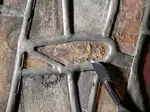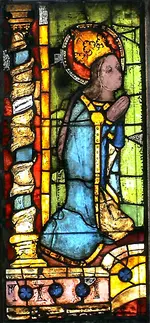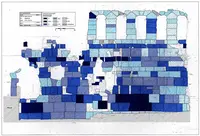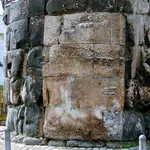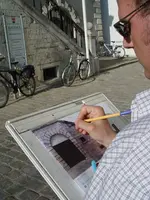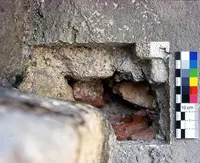What do Materials and Preservation Scientists do?
You make yourself familiar with "the object" and try to understand even the smallest details. This concerns the material structure as well as the history of its creation. Influences are traced that have changed "the object" over time. Materials and Preservation Scientists are trackers.
However, reading traces is not always easy. A distinction is made between a material level, the "monument substance," which includes the damage pattern and corrosion history, and an intellectual-content level, which contains artistic, technological and historical aspects. To explain incomprehensible appearances or rapid decomposition processes, it is sufficient to have know-how in craftsmanship or art technology, as well as knowledge of the humanities and natural sciences. In most cases it is necessary to combine both approaches
and competencies.
What distinguishes Materials and Preservation Scientists from Conservators?
Restoration is an activity in which the requirements of practice are paramount. The profile of the conservator corresponds to a doctor in medicine. Characteristic is the empirical and applied research on and of individual objects. Basic scientific knowledge merely supplements practical and manual skills and is intended to enable critical method.
Additional scientific qualifications enable entry into research, which can be art-historical-humanities, analytical-scientific or cognitive-informative. Materials and Preservation Science is dedicated to individual problems of the restoration discipline. The best known of these are the conservation sciences established in the English-speaking world, which, in keeping with the Anglo-American understanding of a controllable world, are structured in terms of the natural sciences and place technical-material aspects in the foreground.
Common to all differentiations in the restoration and conservation sciences, however, is the scientific-methodological approach, which is always systemic-interdisciplinary and rarely purely systematic-disciplinary. Restoration and conservation science are a pair similar to medicine and clinical research - only the target groups are different.
What does the study program want?
The degrees offered tries to make the world of restorers and their scientists understandable (and to promote the cause). On the one hand, the introductory lecture focuses on explaining the restoration science method, the "inventory". It is the first step to treatment and comparable to the preliminary examination procedures in medicine. On the other hand, the diagnosis of the condition of the objects based on the preliminary examinations and the compilation of treatment options are dealt with.
In the lecture Introduction to Materials and Preservation Science for master and minor students, the objectives, project planning and implementation of restoration are explained. The focus is on natural stone, plaster, and glass, the defining materials in historic preservation; special attention is given to the impact of environmental factors and the influence of restoration or conservation history. The thematic focus in the winter semester lies on the assessment (inventory and condition assessment) and the interpretation of the results of the examination (diagnosis).
Among other things, the properties of selected historical building materials and the scientific recording and processing of findings are dealt with. The second part of the lecture in the summer semester (Fundamentals: Building Preservation Science, Part II) deals with scientifically prepared restorations and preservations and their implementation in practice (therapy). In an overview presentation the properties and applications of and experiences with historical and modern conservation materials are shown.
A seminar on restoration inventory deepened the theoretical examination of objects in the preservation of historical monuments. The inventory and the development of a preservation concept for historical monuments are taught using EDP-supported methods. The course is based on VDI Guideline 3798, the MMS software developed at the Bamberg Chair of Cultural Informatics (MOBILE MAPPING SYSTEM), and the archiving software developed by the universities of Passau and Bamberg (DIGITALES DOMBAUARCHIV).
Seminars on historical working techniques are designed to lay the foundations for understanding art technological and materials science issues. Block courses on the manufacture, processing and restoration of glass, cast stone, metal casting and metal overlays are offered on a rotating basis for minor students.
The Application Week in Materials and Preservation Science is offered only to master's students in the Master's Program Heritage Sciences.
Within the framework of one-week, compact block seminars with different main topics are offered each summer semester. The spectrum ranges from the material lime or limestone to glass. Students are also taught how to prepare, examine, analyze and evaluate mortar samples in the in-house laboratory.
The intensive week of 3D laser scanning has become firmly established. After a theoretical introduction in small groups, the students become familiar with different types of scans in practical exercises directly on site, at the object, and learn how to handle them. In addition, the generated data is post-processed by the students, which allows them to go through the handling of this particular digital technology from beginning to end.

